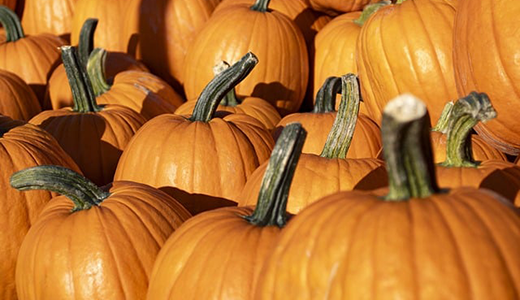
Check for the maturity of pumpkins by pressing your thumbnail into the rind, says K-State horticultural expert Cynthia Domenghini. If the rind is hard, it was likely harvested at maturity.
K-State horticulture expert shares tips to make pumpkins last longer
K-State horticulture says checking for maturity is important
Oct. 19, 2023
By Maddy Rohr, K-State Research and Extension news service
MANHATTAN, Kan. — Fall decorating isn’t complete without pumpkins, but they can rot quickly. Kansas State University horticulture expert Cynthia Domenghini said selecting the right pumpkin is key.
“When selecting pumpkins for your home, check for maturity by pressing your thumbnail into the rind,” Domenghini said. “If the rind is hard and sounds hollow when thumped, it was likely harvested at maturity. Pumpkins that are soft or haven’t developed a solid color will rot more quickly.”
Pumpkins harvested at maturity have a waxy coating that protects them from drying out, she said. She also suggests creating an artificial coating using spray wax, which may help prolong the pumpkin’s life.
“Harvested pumpkins last longer if they are kept cool, which isn’t always a possibility when displayed outdoors during our extended summer weather days,” Domenghini said.
Carved pumpkins have a much shorter shelf-life, sometimes only a few days to a week before noticeable rotting occurs.
Domenghini suggests these steps to help preserve carved pumpkins:
- Clean out the inside thoroughly, removing all seeds and loose string.
- Soak the inside of the pumpkin in a 10% bleach-water solution for several hours.
- Avoid using a real candle inside the pumpkin since the heat will speed up rotting.
“Pumpkins have a high water concentration, so if there’s a freeze in the forecast, bring your jack-o-lanterns inside,” Domenghini said.
Domenghini and her colleagues in K-State's Department of Horticulture and Natural Resources produce a weekly Horticulture Newsletter with tips for maintaining home landscapes and gardens. The newsletter is available to view online or can be delivered by email each week.
Interested persons can also send their garden and yard-related questions to Domenghini at cdom@ksu.edu, or contact your local K-State Research and Extension office.

